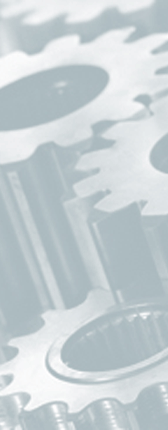-
Engineering Design & Manufacturing
- Mighty River Power (Mercury) - CFD
- Oasis Engineering - FEA
- Ion Automotive - FEA
- Dimond Roofing - FEA
- Adams Civil & Design
- Oasis Engineering - CFD
- Sunshine Heart Inc - FEA
- Power Generation - CFD
- AH Gears - FEA
- ANCA Motion - PLM
- Methanex - CFD
- Sir Peter Maire speaks at NZMEA - PLM
- Springfree - FEA
- Zubi Sensational Food Labelling - PLM
- KM-Mechanical - AutoPIPE
- Sawrey Consulting Engineers - Tedds
- Emirates Team New Zealand - FEA
- Sawrey Consulting Engineers - STAAD.Pro
- North Otago Irrigation Company and URS - CFD
- Matrix CFD training - CFD
- Oji Fibre Solutions and Beca AMEC - CFD
- AirWave - CFD
- Combustion simulation - CFD
- Navman Wireless - Ideal PLM Solution
- Opia - CFD
- Galloway - FEA
- Firstgas - EDM
- FMP Group (Australia) Pty Ltd - PLM
- Coffey Projects - CFD
- Infrastructure Asset Info Mgmt
- Plant & Process


The CompanyIon Automotive make aluminium components, mainly wheels, for automotive suppliers, mostly Ford USA & Ford Australia. Delivering a wheel in the shortest possible time frame, with the very latest style, minimum weight and maximum strength; this is the daily challenge faced by Ion Automotive.
The ChallengeOnce Ion Automotive wins the work the hard work starts. Wheels have highly stringent requirements for strength, fatigue, noise, vibrations, weight and style. Designers at Ion take all these requirements and create a 3D solid model of the wheel. The wheel can then be analysed using a method called Finite Element Analysis (FEA). |
FEA shows where, under stress, the wheel is most likely to fail and whether it meets the design constraints. If not, the model is adjusted and the wheel reanalysed. Every iteration of FEA improves the overall design and reliability of the wheel. The SolutionIon Automotive and Matrix Applied Computing correlated data from the physical world (the rig tests), and checked the stress predicted by the FEA. This enabled further streamlining of the FEA analyses, which again improved real life stress testing. Matrix also provided a Knowledge Management solution – recording a total history of design change. This information is used again on future wheels further reducing the design time cycle. Reducing “time to market” was a key target for Ion Automotive, and that’s why they became Technology Partners with Matrix Applied Computing Ltd. With years of FEA expertise, Matrix developed the “Matrix Technique” to the Ford challenge. Renwick is clear on what Matrix have done to facilitate Ion’s relationship with Ford. “The technology partnership with Matrix has enabled us to provide Ford with FEA confidence, design efficiency, reduced cycle times while all the time hitting increasingly challenging weight targets.” The ResultWhile improvements in the CAD software and meshing capabilities have helped, it’s the result of reverse engineering and extensive strain gauge studies which make the biggest difference in the Matrix Technique, reducing Ion’s model cycle time to Ford. “Matrix are pragmatists; many companies sell CAD solutions and FEA software, but Matrix are realistic. They don’t oversell their products or services – they make you aware of any limitations up front. They worked to understand our business and partnered with us for the long term, helping us to manage our own information." Put simply, Renwick says “Matrix deliver what they promise”. To learn more about Finite Element Analysis (FEA) click here. |
||




